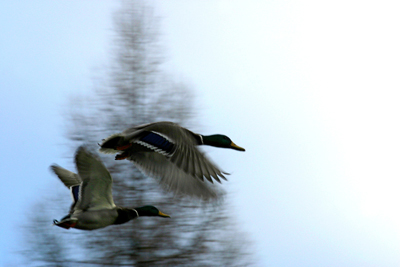
In an article first published by ASSIST News Service, BRIAN NIXON looks at the importance of birds…
New Mexico, US
As I child I was convinced I could talk with birds. Once on a trip to the Presbyterian retreat centre, Ghost Ranch, New Mexico (the former summer home of artist, Georgia O’Keeffe), we stopped by a small zoo they had on the property. There I would walk through the aviary section whispering to the birds. As a boy of nine, I was sure a particular red-tail hawk understood what I said, communing in a language all our own.
Five years ago, my Navajo family (friends, not by birth) gave me my Navajo name. After watching me work, Grandma Marlene chose dahiiti’hii, or the hummingbird. She said she gave it to me because “I can’t sit still, and like to lead with my nose.”
 |
|
PICTURE: © Griszka Niewiadomski/www.freeimages.com |
To say the least, I’ve had a fascination with our feathered friends all my life.
Jesus, too, admired birds. In several parables and teachings He referenced the creatures of flight.
“Consider the birds,” He reminded the disciples, as He discussed how God cares for them – and us.
“Are not two sparrows sold for a penny,” He told the disciples, saying that “not one will be forgotten before God,” inferring God will not forget His children.
“The birds come and make nests,” Jesus stated regarding the kingdom of God.
And again, Jesus references birds when discussing the fact that He has no home: “The birds of the air have nests, but the Son of Man has no where to lay His head.”
Even the Holy Spirit – in the form of a dove – descended upon Jesus at His baptism.
Birds abound in Jesus’ world.
By some accounts, there are roughly 300 passages found in the Bible that reference birds. Most of the references are general in usage, stating the generic term, fowl or bird. Other passages are specific, telling us the type of bird, and thereby giving us a clue in interpretation of the passage.
When eagles are used in a passage, it conveys strength, power, and endurance.
When a vulture is used in a passage, it usually references death. Jesus said, “Wherever the corpse is, there the vultures will gather.”
And the dove – one of the favorite birds of the Biblical writers – references peace, God’s favor, the nation of Israel, and the Holy Spirit. Jesus told His disciples to be “wise as serpents, but gentle as doves,” inferring gentleness and goodwill.
The fact that Jesus was an admirer and observer of birds has led many Christians to be keen devotees of the amazing animals.
Reformer, Martin Luther, called “birds our schoolmasters.”
The Christian poet and clergyman, George Herbert, used birds in some of his poems, even shaping the famous poem, Easter Wings, in the shape of bird wings.
CS Lewis used birds throughout his Chronicles of Narnia books, showing their variety and beauty, naming over a dozen in Aslan’s kingdom.
Welsh clergyman and poet, RS Thomas, was an avid birdwatcher, spending much of his vacations on birding escapades.
Christian leader, Debbie Blue, wrote a book, Consider the Birds, discussing birds and the Bible, using birds as a means to delve into human nature.
And more recently, the band, Wovenhand, led by David Eugene Edwards, released an album called, Consider the Birds, stating, “I wanted to remind myself of the birds. I am often anxious. I need to fall on my faith more.”
“(P)robably the best-known bird-lover, clergyman, and amateur ornithologist was John Stott. As a great enthusiast of birds and bird watching, Stott was an advocate for birds like no other, calling his love of birds, ‘orni-theology.'” |
But probably the best-known bird-lover, clergyman, and amateur ornithologist was John Stott. As a great enthusiast of birds and bird watching, Stott was an advocate for birds like no other, calling his love of birds, “orni-theology.”
One of his best-loved books is called Birds our Teachers. In this work he relates birds to many subjects ranging from repentance, self-esteem, gratitude, work, freedom, joy, and love. When I had the honor of meeting John Stott, the book I chose for Him to sign is this marvelous little work.
On a recent birding trip to the beautiful Bosque del Apache (a birding hotspot in New Mexico), I was reminded of the beauty and sublimity of birds. As my wife and friend, Rita, snapped photos, I watched – through binoculars – Sandhill cranes, Canadian geese, and dozens of other species take flight, feed in the water, and relax in the sun.
Throughout all of this beauty, I couldn’t help but think of John Stott’s book where he reminds us of Jesus’ command to be bird watchers.
Stott states, “It was Jesus Christ himself in the Sermon on the Mount who told us to be bird-watchers! ‘Behold the fowls of the air.’ (Jesus’) instruction becomes ‘watch birds!'”
Stott continues, “The Greek verb employed here means to ‘fix the eyes on or take a good look at’.” For Stott, bird watching is simply taking Jesus at His word.
Stott concludes, “So we have the highest possible authority for this activity…the Bible tells us that birds have lessons to teach us…”
And instruct they do.
Birds are more than just feathery fowl, but teachers tethering us to God’s grace, helping our faith take flight.





